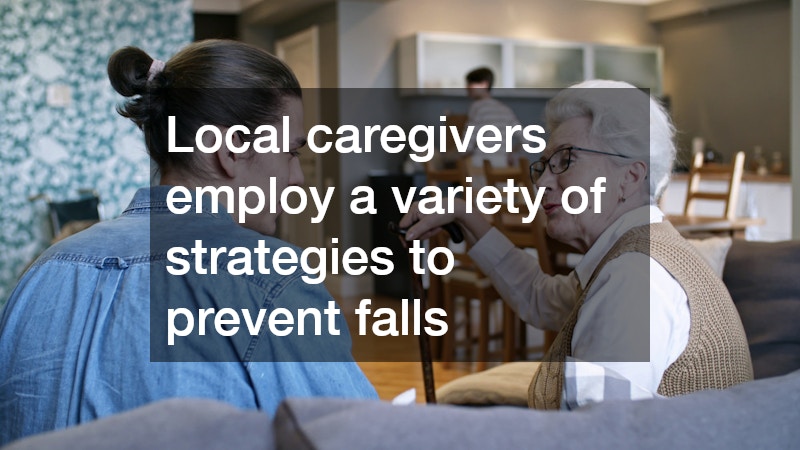Learn about the crucial role of local caregivers in minimizing fall risk among vulnerable populations, particularly the elderly. Understanding the strategies and practices employed by caregivers can offer valuable insights into enhancing safety and well-being.
What Are the Common Causes of Falls Among Seniors?
Falls among seniors can be attributed to a multifaceted combination of factors. Medical conditions such as arthritis, visual impairments, and cardiovascular issues significantly increase the likelihood of falls.
These health challenges can lead to reduced mobility, coordination, and overall stability, making seniors more susceptible to accidents.
Environmental hazards are another critical contributor. Cluttered living spaces, inadequate lighting, and uneven surfaces create an environment ripe for falls. Many seniors may struggle to navigate their homes safely due to these risks, emphasizing the need for comprehensive assessments of their living environments.
Behavioral risks often play a role as well. Many seniors may underestimate their risk of falling or may engage in activities that elevate this risk without proper precautions. Awareness and education about safe practices can significantly mitigate these behavioral risks, and local caregivers can bridge this knowledge gap effectively.
How Can Caregivers Assess Fall Risk in Their Clients?
Caregivers utilize various assessment techniques to identify individuals at risk of falling. The assessment process often starts with a thorough review of the client’s medical history to understand underlying health issues. This information is invaluable in identifying those who may require targeted interventions.
Balance tests are common tools used by caregivers, providing insights into an individual’s stability and coordination. Simple exercises, like standing on one foot, can reveal weakness in balance, prompting caregivers to incorporate strengthening routines specifically designed for their clients.
Environmental evaluations are equally important. Caregivers conduct walkthroughs of the home to identify potential risks, such as loose rugs, poor lighting, or inaccessible pathways. By determining these environmental hazards, caregivers can recommend or institute vital modifications that can significantly lower the risk of falls.
What Strategies Do Caregivers Use to Prevent Falls?
Local caregivers employ a variety of strategies to prevent falls, making significant modifications to ensure their clients’ safety. One prevalent approach is making necessary home modifications, such as installing grab bars in bathrooms, ensuring adequate lighting, and clearing common pathways to prevent tripping hazards. These modifications have a direct impact on reducing falls and promoting independence within the home.
Encouraging exercise is another vital strategy caregivers utilize. Many caregivers recommend or facilitate physical activities tailored to improve strength, flexibility, and balance. Regular physical activity not only enhances physical capabilities but also boosts confidence in movement, which is crucial for fall prevention.
Medication management plays a crucial role in fall prevention strategies as well. Caregivers often review clients’ medications to identify potential side effects that may lead to dizziness or loss of balance. Collaborating with healthcare professionals to adjust medications can significantly diminish fall risks associated with polypharmacy.
How Do Caregivers Support Recovery After a Fall?
When a fall occurs, caregivers play a pivotal role in the recovery process. Their support often begins with providing immediate assistance and ensuring the individual has not sustained serious injuries. Caregivers are trained to respond effectively, minimizing the risk of complications following a fall.
Rehabilitation assistance is also a vital aspect of the caregiver’s role. They help clients adhere to rehabilitation plans by facilitating exercises prescribed by physical therapists. This support encourages clients to regain their strength and mobility, significantly enhancing the chances of a smooth recovery.
Emotional support is equally important during post-fall recovery. Falls can lead to feelings of fear or loss of confidence, and caregivers can assist in providing reassurance and motivation. By fostering a positive environment and encouraging clients to take gradual steps toward regaining their independence, caregivers become central to their clients’ emotional well-being during recovery.
What Resources Are Available for Local Caregivers to Enhance Fall Prevention?
Local caregivers can access a wealth of resources aimed at enhancing their skills in fall prevention. Many communities offer training programs that educate caregivers on assessing fall risks and implementing effective prevention strategies. These programs often cover topics such as the latest best practices and safety protocols tailored to senior care.
Support groups and networks for caregivers are also valuable resources. They provide a platform for caregivers to share experiences, solutions, and insights, creating a collaborative environment. Networking with other caregivers can lead to innovative strategies and collective learning opportunities that ultimately benefit their clients.
Additionally, many organizations offer informational materials, workshops, and seminars focused on fall prevention. These resources empower caregivers with the knowledge needed to create safer environments and improve care. By utilizing these resources, caregivers can enhance their skills and better support their clients in minimizing fall risks.
Local caregivers are instrumental in minimizing fall risk for seniors through assessment, prevention strategies, recovery support, and access to valuable resources. Understanding their role can empower families and communities to enhance safety for their loved ones. Through their dedicated efforts, caregivers not only enhance the physical well-being of seniors but also contribute significantly to their overall quality of life.
